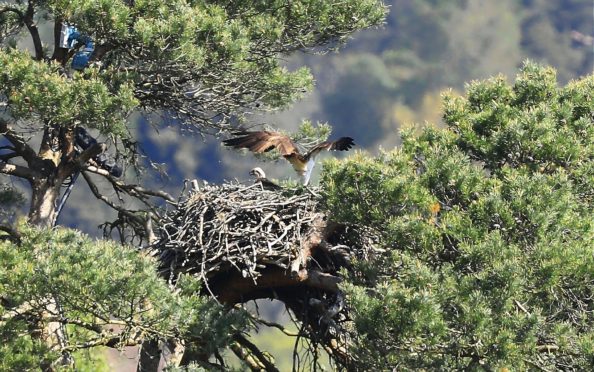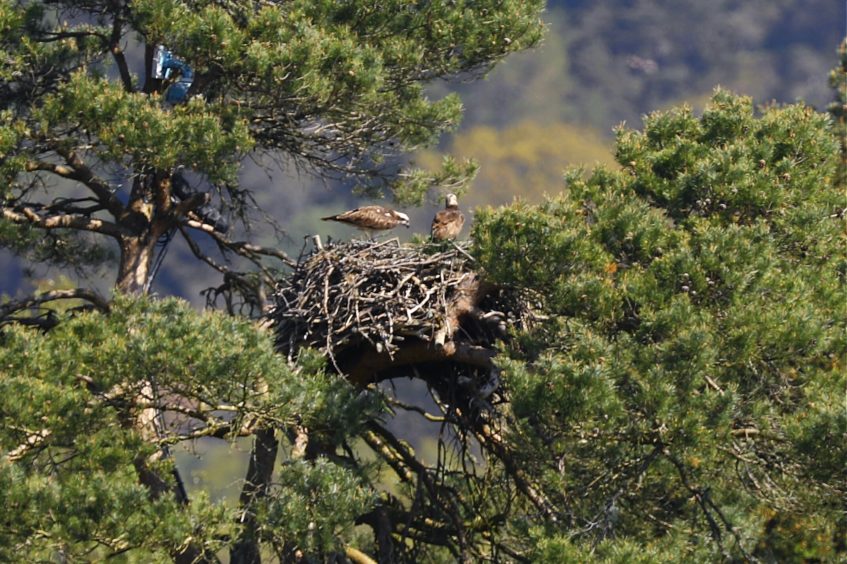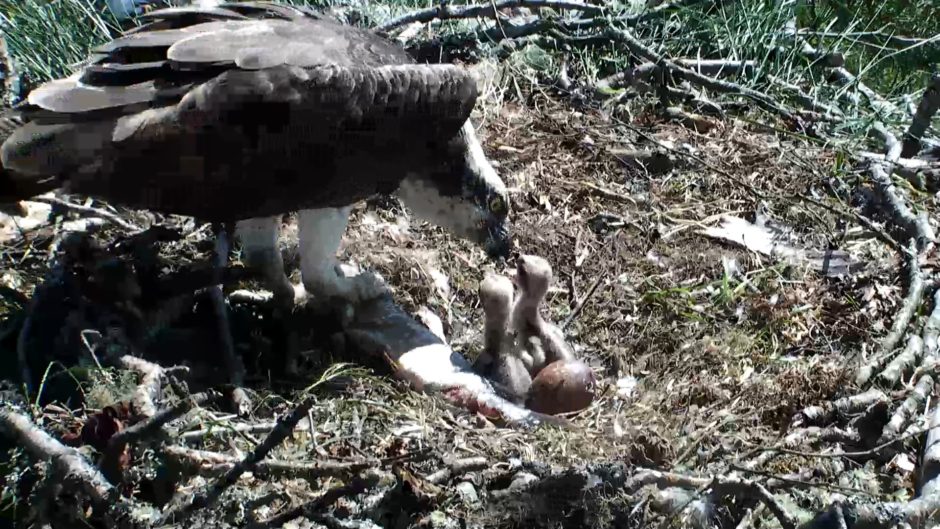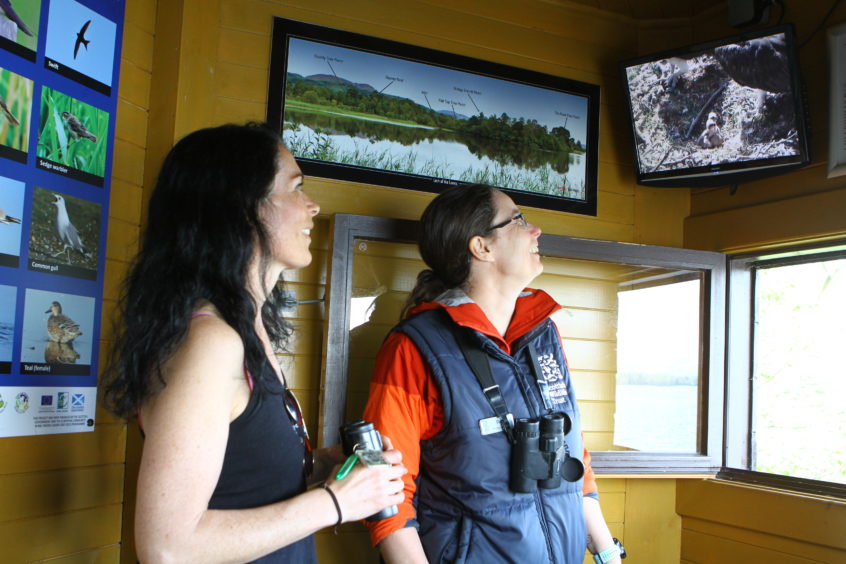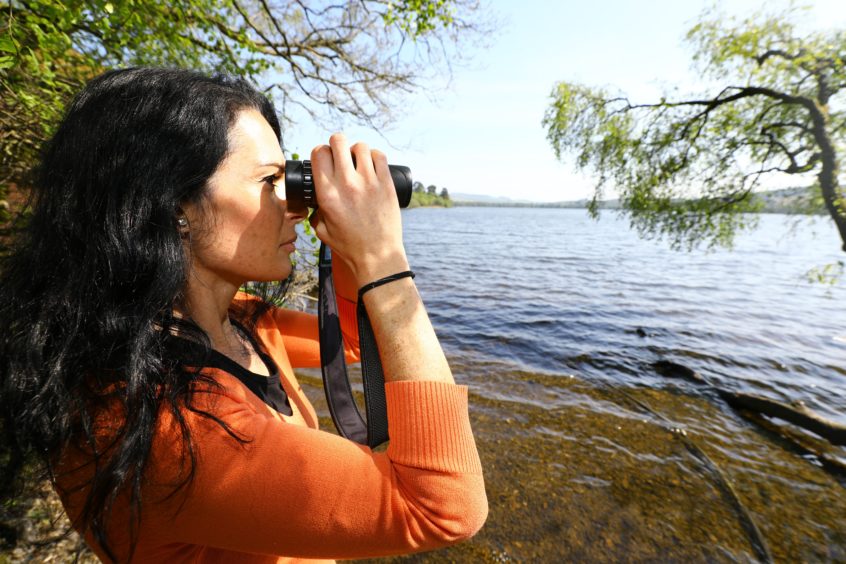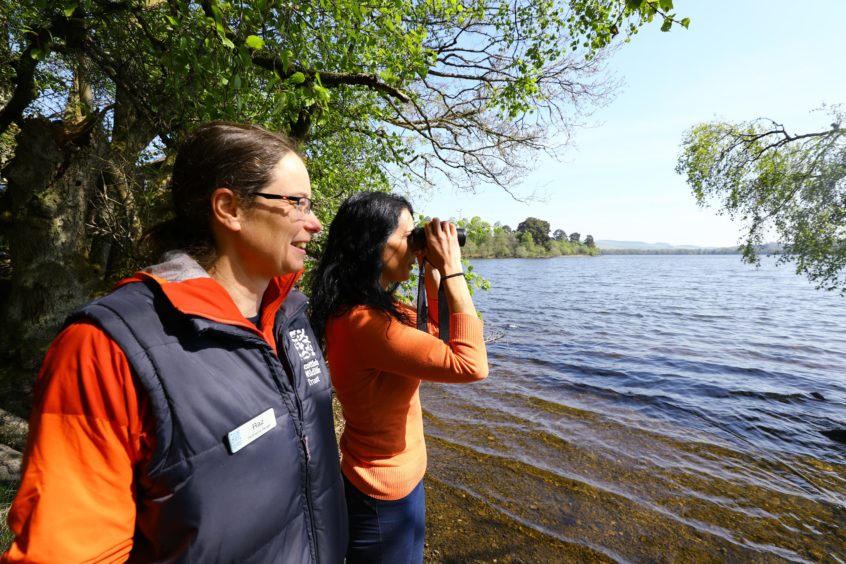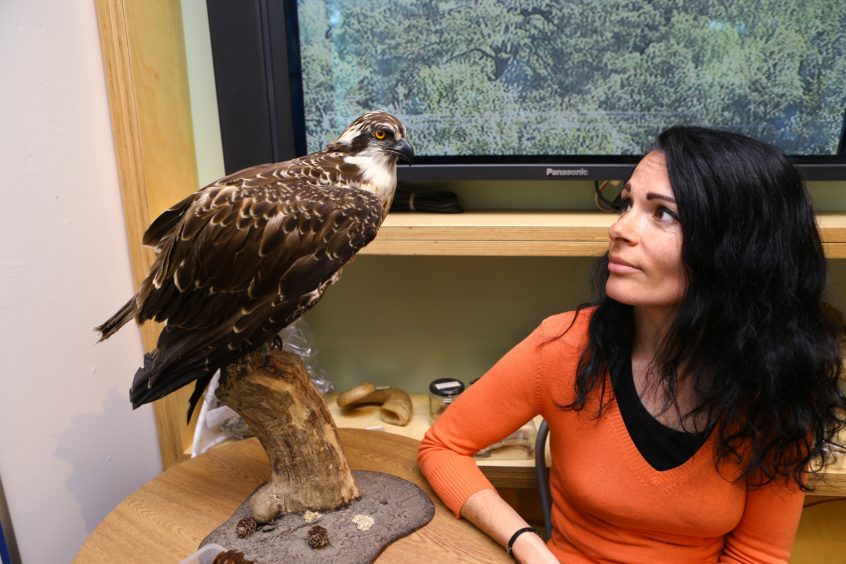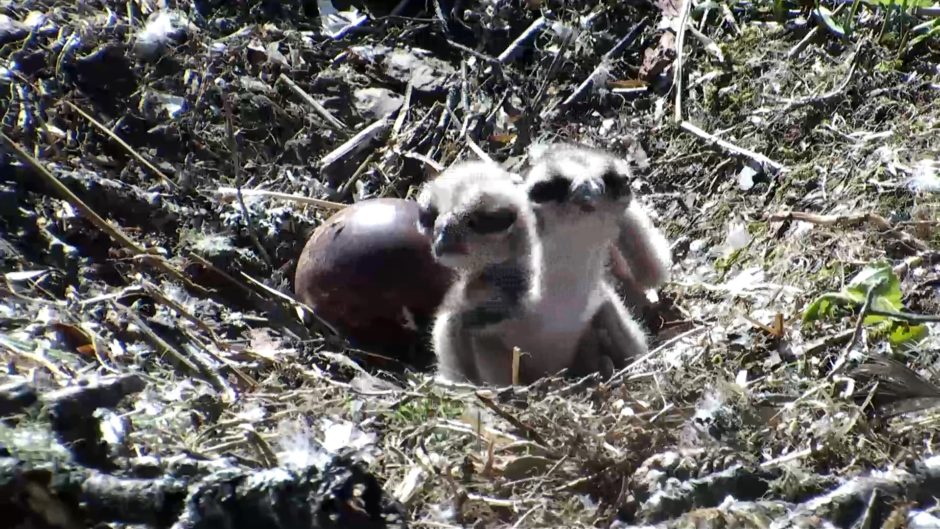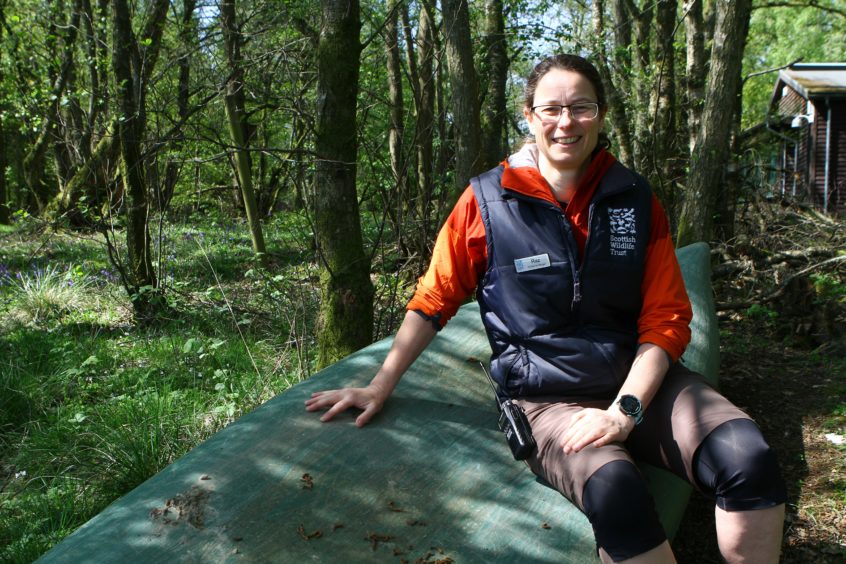It’s an exciting time at Loch of the Lowes wildlife reserve, as Gayle discovers when she turns up to watch an osprey chick hatching…
Excitement buzzes in the air when I arrive at Loch of the Lowes first thing on a sunny Wednesday morning.
The car park is stowed out with eager beavers hoping to witness the hatching of the third and final osprey chick of 2019.
“We stayed in our camper van overnight so we could be up bright and early to watch!” one lady tells me, a huge grin spreading across her face.
This year is particularly special for the Scottish Wildlife Trust near Dunkeld because it marks the 50th anniversary of the Trust purchasing the reserve – and 50 years of osprey conservation at the site.
Back in 1969, Loch of the Lowes was one of a handful of places where ospreys could be seen, and the reserve has played a big part in inspiring their wider recovery in Scotland.
Inside the lochside hide, which boasts a fantastic view of the osprey nest positioned high in a Scots pine tree, I meet the Trust’s Perthshire ranger Sara “Raz” Rasmussen and one of four species protection officers, Johnny Rolt.
Johnny, who is also among 50 volunteers who help carry out the 24-hour osprey watch, has been here since 4am. Now that’s dedication!
“The first egg came out in about six hours on Saturday,” he says, his eyes lighting up, “but the second took all day!
“The third one has just started to hatch so it’s a case of waiting now. Its ‘egg tooth’ has broken through the shell, a sign that hatching is imminent.”
The hide boasts binoculars, telescope and live osprey webcam which points right down into the “cup” of the nest – giving a bird’s eye view of the action.
With the naked eye, we spot dad flying into the nest with massive sticks, and Raz shows us a photo of a huge pike he brought in earlier.
“It’s the fifth season for this breeding pair and this will be their 13th chick,” she says. “They’re very dedicated parents, ensuring the little ones are fed evenly.”
While the birds are given the colloquial names “Lassie” and “Laddie”, Trust staff reference them differently.
“We call them LF15 and LM12 – basically the Lowes female arrived at the reserve in 2015, and the Lowes male arrived in 2012,” explains Raz.
As we watch the nest, we notice mum appears to be “listening” to the egg. This might mean the chick is cheeping and getting ready to push its way out!
In the first few hours after hatching, chicks are weak and unable to sit up or lift their heads.
However, they quickly gain strength and can eat small pieces of fish offered by their parents.
“Dad has been bringing in loads of trout, pike, eels, perch and grayling,” says Raz.
“The loch is a fantastic fishing area and the nesting habitat, with the tall, flat-topped Scots pine, is ideal.”
Indeed, the nest, which is in Raz’s words “the circular version of a double mattress”, gets bigger every year.
“It’s the fourth nest on the site and there’s been one here since the 1960s,” says Raz.
“It’s an intense period for the birds. Dad arrived from West Africa on March 15 and started pimping the nest while he waited for his lady to arrive on March 23.”
Amazingly, ospreys live independent lives outside the breeding season but LM12 and LF15 have been meeting up and mating at the reserve since 2015.
While mum sits on the nest incubating, dad’s main job (although he does take the odd turn incubating!) is hunting for fish. The young can fly about 55 days after hatching, but they depend on their parents for another month or so.
Once they fledge, dad teaches them to fish.
The birds migrate to West Africa in winter, a journey of more than 4,000 miles which they make independently.
Keeping the species safe – from human disturbance, natural predators and egg thieves – is hugely important.
“Other ospreys out prospecting for territory can also be a threat,” says Raz.
“We had PH1, a two-year-old male born in 2017 – the son of LF15 and LM12 – land on the nest but mum gave him a curious look and we wondered, did they recognise each other? He flew off and starting preening! This was a stressful day for our pair when six intruding birds were making attempts on the nest. It’s all about survival of the fittest breeding pair.”
The osprey protection team keep a beady eye out for reckless disturbances – people walking under the nest, dog walkers, photographers, or those getting too close to the nest in boats. The birds are a “schedule 1” species, meaning any disturbance is illegal and – as such – access to the loch is not permitted.
“If the birds are off the nest for a few minutes, predators can come in and take the chicks,” says Raz.
“Another big threat to raptors, and one that’s increasing, is drones.”
I stay at the reserve, transfixed, for a few hours, and explore the visitor centre, coming face-to-face with Gary – a taxidermied juvenile osprey who died after his wing was broken. He’s a very handsome fellow!
I later discover that the third chick finally emerged from its shell at 5.12am the following morning – around 20 hours after the first signs the egg was hatching. I wish the osprey family the best of luck!
info
Loch of the Lowes visitor centre is open daily with 24-hour access to the reserve hides. The live webcam ensures people from around the world can follow events. Ospreys were extinct in Britain for much of the 20th Century. They began to recover in the 1960s and 250 pairs of ospreys now breed in the UK, 224 of which are in Scotland. This recovery is thanks to the efforts of conservation charities including the Scottish Wildlife Trust, whose Osprey Protection Programme is supported by players of People’s Postcode Lottery. scottishwildlifetrust.org.uk
